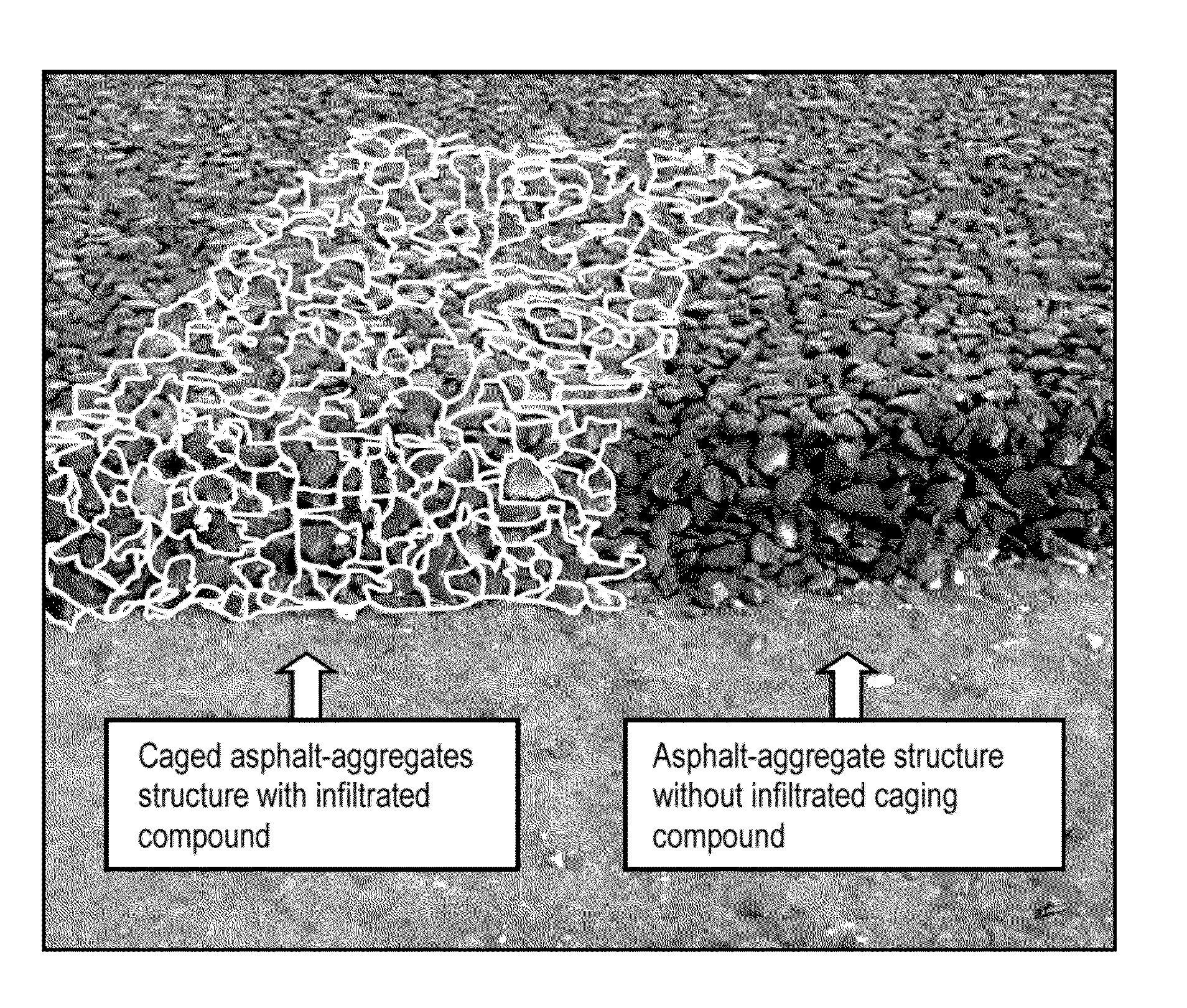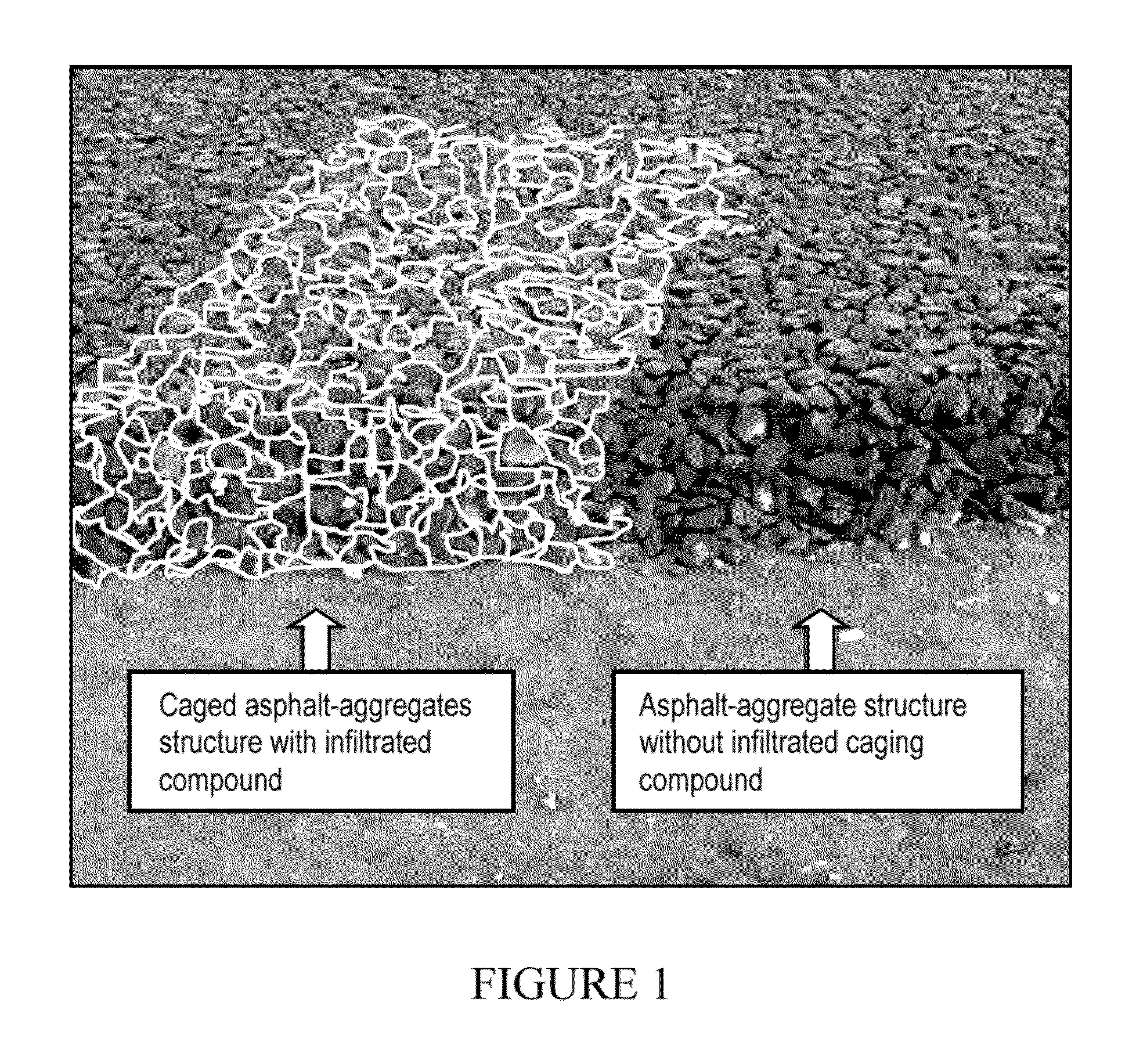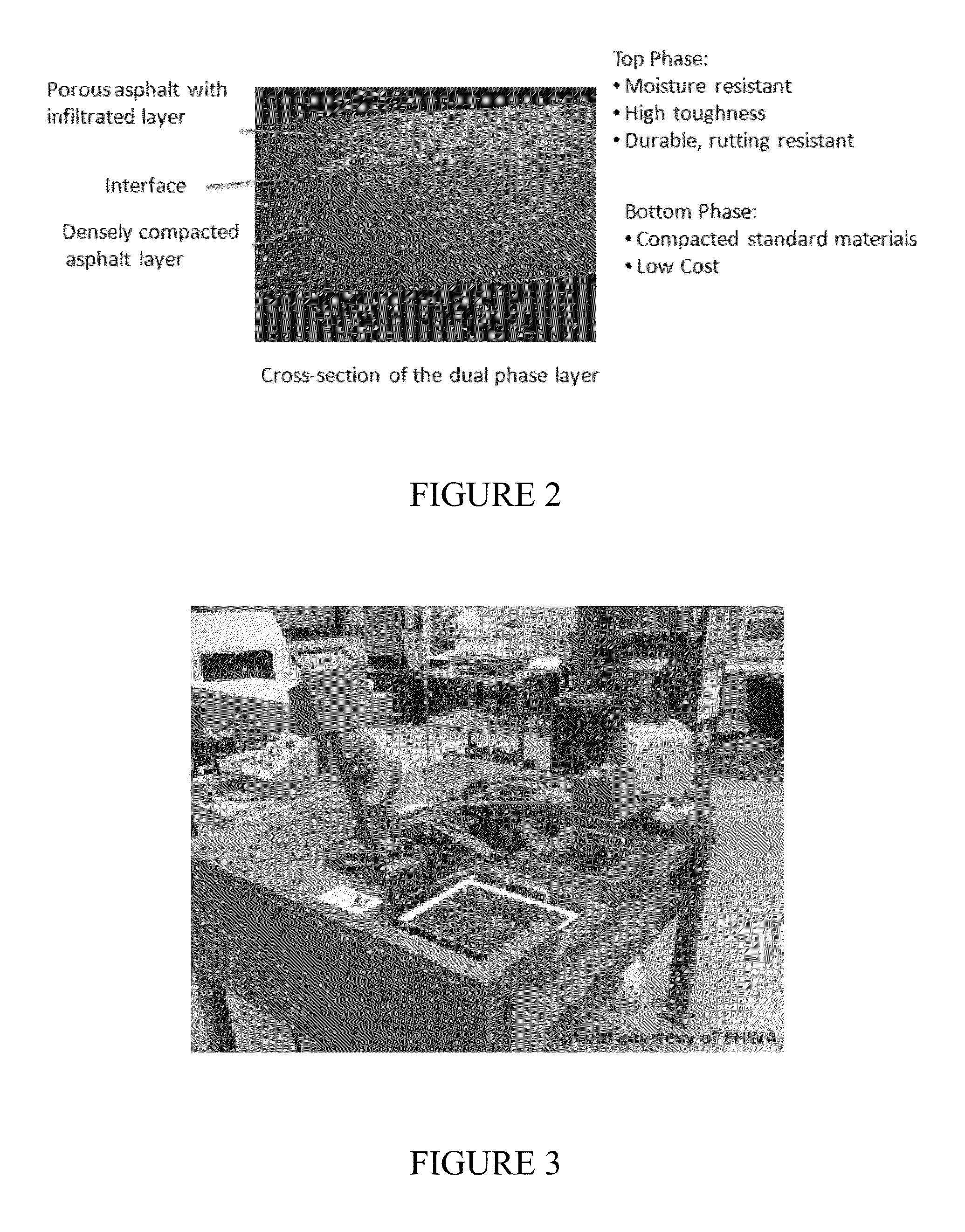Application of high toughness, low viscosity nano-molecular resin for reinforcing pothole patching materials in asphalt and concrete base pavement
a nano-molecular resin and pothole patching technology, applied in the field of high toughness, low viscosity nano-molecular resin for reinforcing pothole patching materials in asphalt and concrete base pavement, can solve the problems of mechanical damage, severe impact on the life of concrete structures such as roads, runways, buildings, etc., and achieve the effects of improving the durability of concrete, low viscosity, and fast curing
- Summary
- Abstract
- Description
- Claims
- Application Information
AI Technical Summary
Benefits of technology
Problems solved by technology
Method used
Image
Examples
example
[0116]The following example describes specific aspects of some embodiments of the disclosure to illustrate and provide a description for those of ordinary skill in the art. The example should not be construed as limiting the disclosure, as the example merely provides specific methodology useful in understanding and practicing some embodiments of the disclosure.
[0117]Introduction
[0118]As the nation's asphalt pavements age and deteriorate, corrective measures are desired to restore safety and rideability increases. The potholes and alligator cracks in the asphalt pavement of our country's roadways have become an annoying part of our daily life. An innovative and integrated approach is developed for pothole repair technology, by using a low-viscosity, tough dicyclopentadiene (DCPD) resin as a binder or additive in asphalt-aggregate pothole repair materials. Certain classes of DCPD resin can be cured by commercially available catalysts (e.g., Grubbs' catalysts) to become an ultratough m...
PUM
| Property | Measurement | Unit |
|---|---|---|
| porosity | aaaaa | aaaaa |
| porosity | aaaaa | aaaaa |
| thickness | aaaaa | aaaaa |
Abstract
Description
Claims
Application Information
 Login to View More
Login to View More - R&D
- Intellectual Property
- Life Sciences
- Materials
- Tech Scout
- Unparalleled Data Quality
- Higher Quality Content
- 60% Fewer Hallucinations
Browse by: Latest US Patents, China's latest patents, Technical Efficacy Thesaurus, Application Domain, Technology Topic, Popular Technical Reports.
© 2025 PatSnap. All rights reserved.Legal|Privacy policy|Modern Slavery Act Transparency Statement|Sitemap|About US| Contact US: help@patsnap.com



